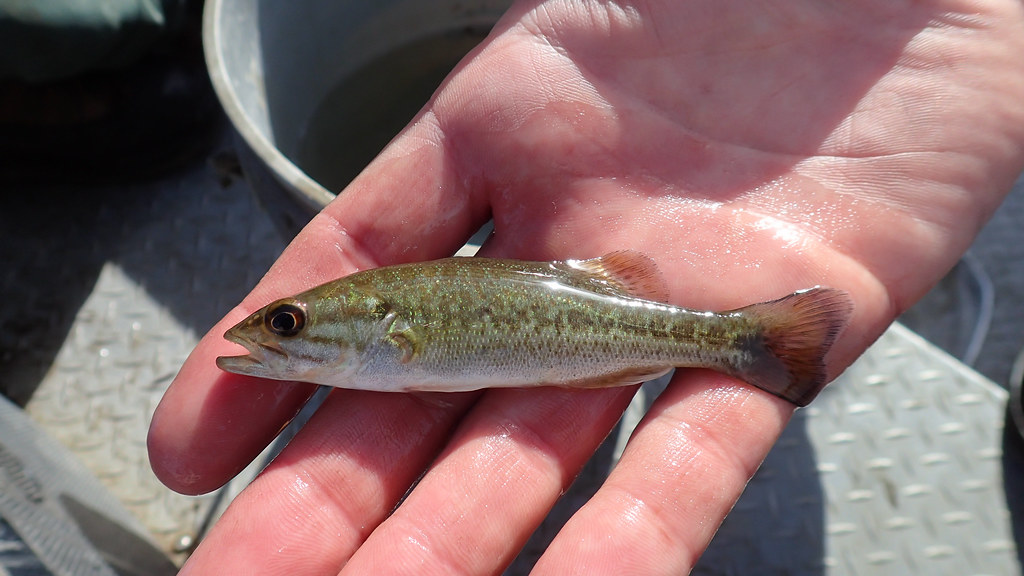Monday September 4, 2017

Pollution in the environment can take many forms, from physical trash to invisible chemicals. Once it enters a waterway, chemical pollution can spread over great distances and pose harm to aquatic species. While humans have the ability to pick up and physically move away from an unfavorable environment, such as leaving a heavily air-polluted city for one with cleaner air, escape often isn’t possible for fish in polluted water. We’ve previously described how pharmaceutical drugs can change the behavior of fish (see Fishy Side Effects). In recent years, attention has been focused on substances discharged into the environment that can disrupt the normal endocrine (hormone) function of fish and wildlife. One bizarre characteristic of fish exposed to hormone-disrupting water pollution is the presence of female egg cells growing in the testes of male fish, a condition termed “intersex.” Intersex fish are occurring around the globe, even in wildlife refuges, illustrating the power of aquatic pollution to infiltrate even supposedly pristine areas.
Some fish species, such as clown fish and some grouper and gobies, are naturally hermaphroditic, and have the ability to change sex to increase their chances of reproducing. Naturally possessing both sex organs makes these hermaphroditic species unique. However, when female eggs are present in male fish that are not hermaphroditic, as in the case of intersex individuals, it can greatly impede reproductive success. For example, a study on the common roach (Rutilus rutilis) showed that intersex fish produced less milt, their milt had a lower sperm density, and the sperm had reduced motility compared to normal males. Additionally, fertilization success, measured by the number of fertilized eggs capable of leading to live offspring, also declined with increasing severity of the intersex condition in the roach (Jobling et al. 2002).
The occurrence of feminized fish has been associated with effluent discharges into waterways from treated sewage. The main chemical responsible for feminizing fish is ethinyl estradiol, a synthetic hormone found in birth control pills that women excrete. Ethinyl estradiol is not only potent, but also extremely difficult to remove from wastewater, leading to the chemical slipping through treatment plants and ending up in natural waterways. This is a global problem, with feminized male fish discovered in at least 37 species of fish in lakes and rivers around the world (Bahamonde et al. 2013). Even protected, supposedly pristine areas are not free of the intersex phenomenon. The U.S Fish and Wildlife Service studied 19 national wildlife refuges in the northeastern United States and found that 60–100 percent of the examined male smallmouth bass (species shown in the photo above) displayed intersex characteristics (Iwanowicz et al. 2016). The presence of feminized fish in protected areas such as refuges suggests that pollution may be more pervasive than previously thought. The management of upstream water pollution sources can be especially difficult due to uncontrolled inputs from the surrounding watershed, and runoff from farms, towns, and industrial facilities can all affect the water quality of a beautiful wildlife refuge many miles downstream.
What are some realistic options to counteract excessive estrogenic substances in our water that are affecting fish? One potential approach is making upgrades to wastewater treatment facilities, and a facility in Canada that made small upgrades demonstrated promising results (Hicks et al. 2017). The improved treatment process increased the removal of ammonia, leading to a final effluent with a much lower estrogen concentration. This approach led to a drop in incidences of intersex rainbow darters (Etheostoma caeruleum) found downstream, from 70–100 percent before the upgrade, to less than 10 percent after the upgrade. The levels of nutrients and pharmaceuticals (such as ibuprofen, naproxen, and carbamazepine) also decreased following the effluent upgrades. Studies such as this one highlight how feasible actions to stem the flow of estrogens can make a big difference to an ecosystem.
This post featured in our weekly e-newsletter, the Fish Report. You can subscribe to the Fish Report here.
